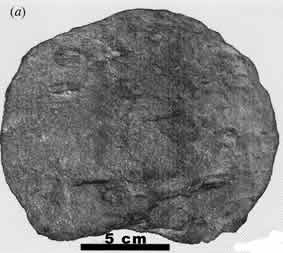

|History
Identifying the animal
Similarly to the devil's corkscrew of the American midwest, the first fossil burrows of South Africa were initially misinterpreted as furrows of a trilobite. Stanistreet and Turner (1979), responding to one such interpretation, pointed out that trilobites do not burrow, that the sediment in which the fossil is found is outside both the stratigraphic and the environmental range of trilobists (Trilobites are thought to have been exclusively marine and according to available evidence became extinct at the end of the Permian, so their discovery in fluvial sediments of Triassic age would be surprising). What baffled the discoverer was the presence of a central ridge in the burrows, a feature that is now known to be characteristic of cynodont burrows, but absent in burrows of extant animals.
The early disputes over the origin of devil's corkscrew established the three components of the systematic study of fossil vertebrate burrows: geometry (shape, size), surface markings, and the infill.